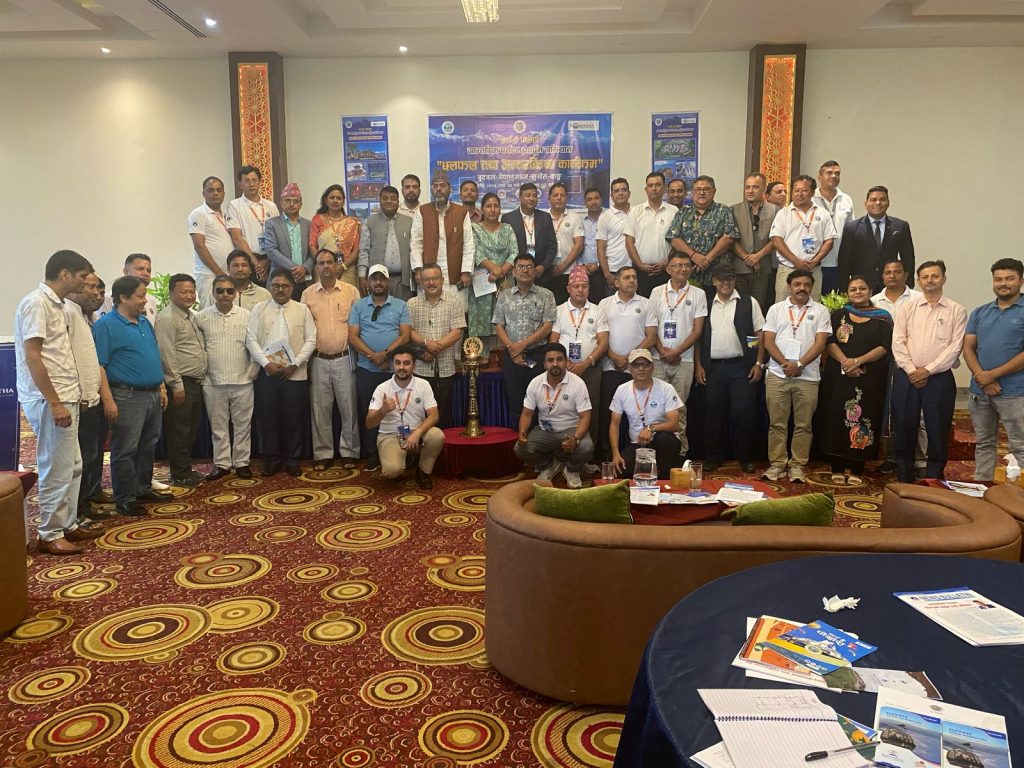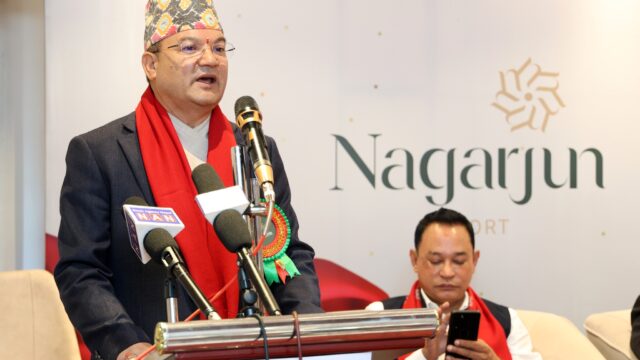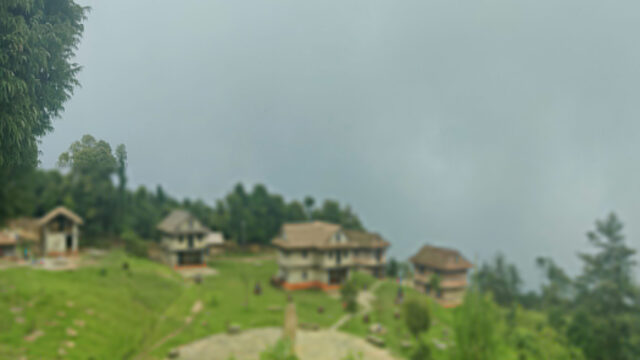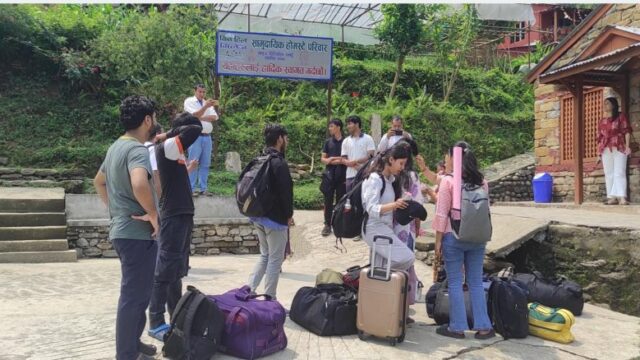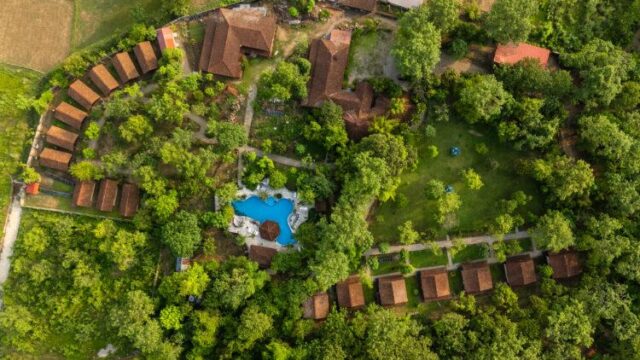The long-running ‘Jau Hai Pokhara’ campaign, initiated by the Hotel Association Pokhara (HAPN) over two decades ago, has now expanded its reach across major western cities of Nepal, including Palpa, Butwal, and Nepalgunj, with the goal of increasing domestic tourist arrivals to Pokhara. The campaign, which was first launched 22 years ago, is now being revitalized with fresh vigor as tourism entrepreneurs travel to various regions to promote Pokhara as the leading domestic travel destination.
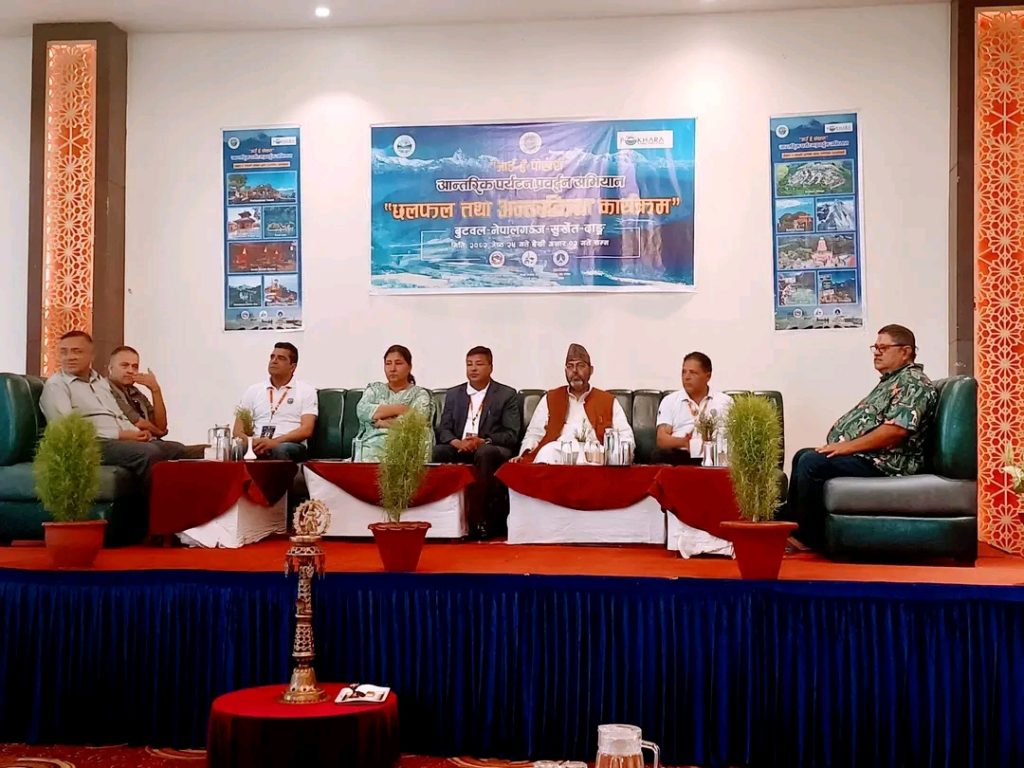
Rewriting the Definition of Tourism
There was a time when the word “tourist” in Nepal immediately conjured up images of foreigners from Western countries. However, this perception began to shift when the Hotel Association Pokhara launched the ‘Jau Hai Pokhara’ campaign, with the message that “Nepalis are tourists too.” It aimed to break the traditional narrative and encourage Nepali citizens to explore their own country. Over the years, this shift in mindset has been instrumental in positioning Pokhara as the top choice among domestic travelers.
Thanks to this campaign, internal tourism in Pokhara has grown significantly. Hotels that once relied heavily on international arrivals are now welcoming thousands of Nepali tourists throughout the year, particularly during festivals, holidays, and long weekends. Today, the campaign is not just a promotional slogan but a national movement to embrace and encourage internal tourism.
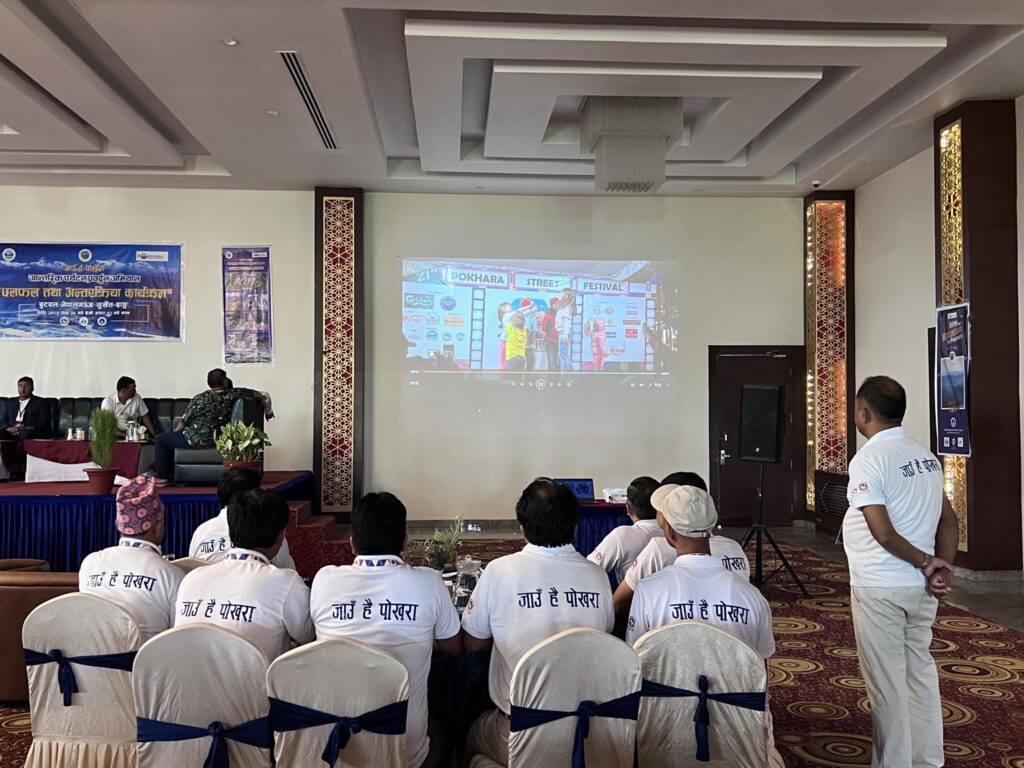
Promotional Outreach in Western Nepal
Currently, the campaign team, comprising tourism entrepreneurs and HAPN members, is conducting promotional programs in Palpa, Butwal, and Nepalgunj. These events include interactive sessions with local businesspeople, journalists, and tourism stakeholders, where discussions revolve around creating travel packages, joint promotions, and infrastructure development.
During the Nepalgunj interaction, local stakeholders urged HAPN to create special travel packages and highlighted that Nepalgunj itself should also be promoted as a tourism destination. They emphasized that campaigns like this should serve as a bridge for two-way tourism development, bringing tourists to Pokhara and encouraging Pokhara-based tourists to explore the western Terai.
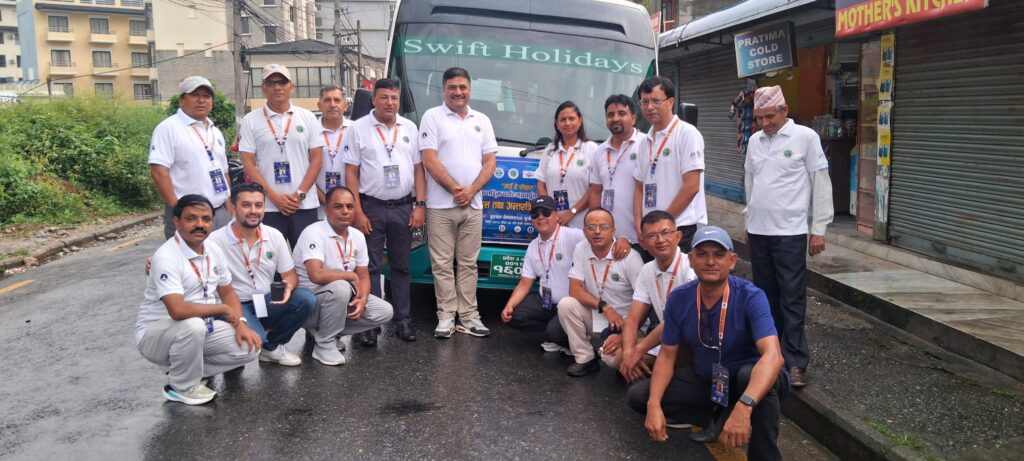
Economic Impact and Off-Season Relief
According to Bharat Parajuli, a central member of the Hotel Association Nepal, campaigns like ‘Jau Hai Pokhara’ have not only made domestic tourism dynamic but also helped mitigate financial strain during off-seasons. With fluctuating international arrivals, off-seasons were traditionally challenging for hotel operators. However, domestic tourism has provided a steady and reliable stream of visitors that has helped maintain operations year-round.
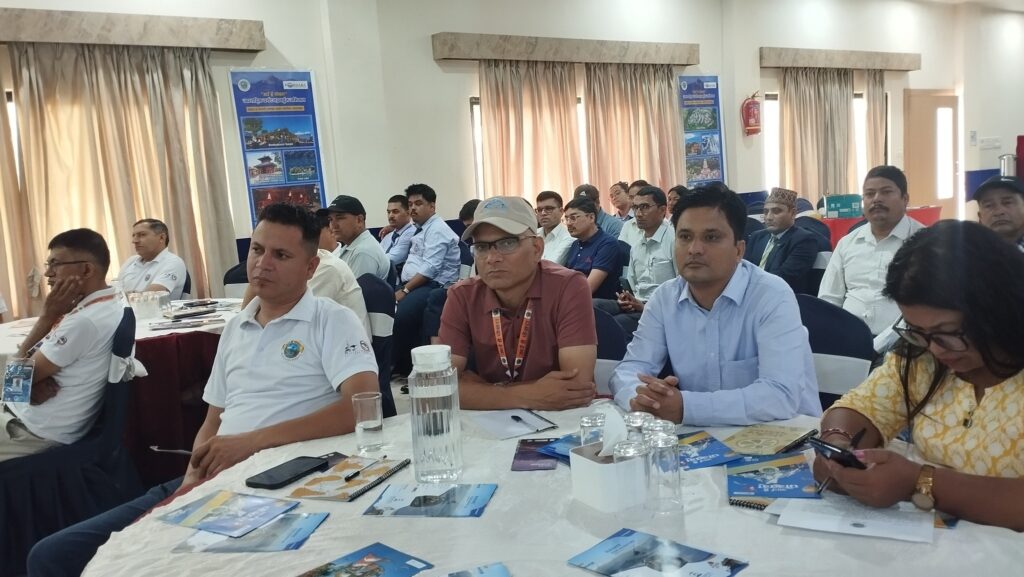
Need for Infrastructure and Private Sector Engagement
Speaking at the event, Krishna KC, a member of the Lumbini Provincial Assembly, highlighted that although the government has invested in major infrastructure projects like the Pokhara International Airport and Gautam Buddha International Airport in Bhairahawa, the lack of sufficient international flights means these projects haven’t yet fully contributed to tourism development. She emphasized the need for greater vigilance and proactive efforts from the private sector to make use of the infrastructure in place.
Local participants echoed the need for regular daily flights between Nepalgunj and Pokhara, as well as comfortable, well-managed road transportation services to facilitate smoother travel for domestic tourists. Improved connectivity, they argued, would not only support Pokhara’s tourism but also strengthen Nepalgunj’s positioning as a tourism hub.
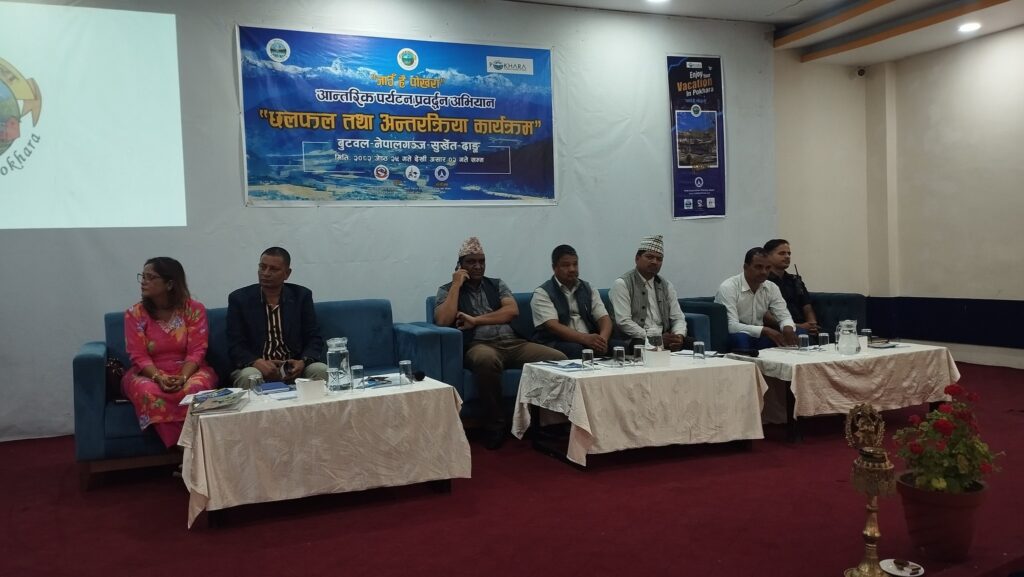
Vision for the Future: India and China in Sight
Looking forward, HAPN plans to extend the campaign to other cities, including Surkhet and Dang, as well as border towns in India. Moreover, under the extended branding of ‘Jau Hai Pokhara’ (Let’s Go Pokhara), promotional activities are also being proposed in Chinese cities, aiming to attract regional tourists from Nepal’s northern neighbor.
According to Laxman Subedi, President of the Hotel Association Pokhara, the campaign is not just about drawing tourists to Pokhara but fostering reciprocal travel exchange and creating cultural and economic bridges between different regions.
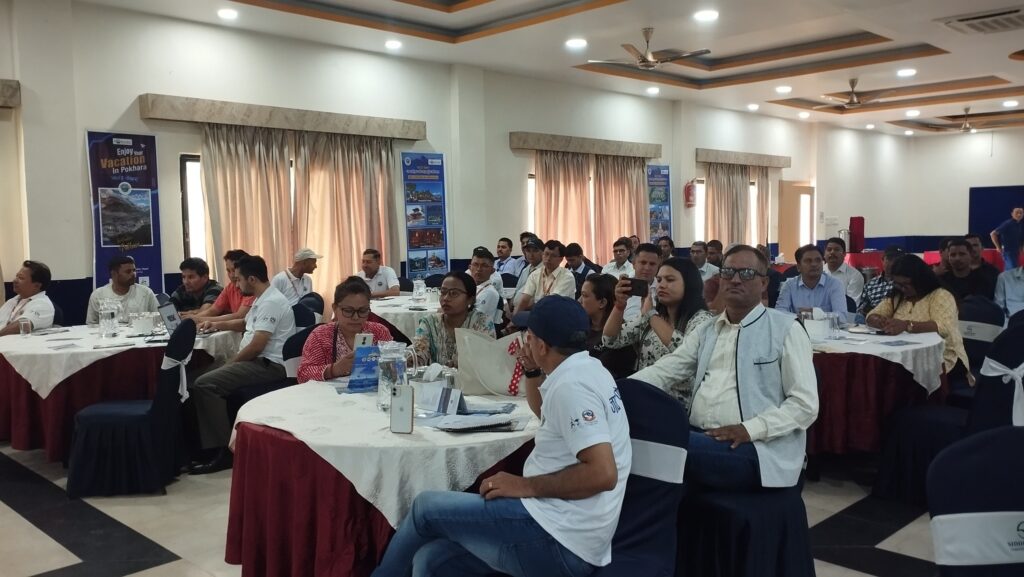
Offers and Tourism Capacity
As part of the revitalized campaign, tourists who travel to Pokhara through the program may receive exclusive discount packages on accommodation, food, adventure activities, and guided tours. Currently, Pokhara has more than 1,200 hotels in operation, collectively capable of hosting over 50,000 tourists daily. These facilities range from budget guesthouses to luxury resorts, offering a wide array of options for travelers of all types.
The campaign continues to emphasize that internal tourism is vital for Nepal’s sustainable tourism development, particularly in the face of uncertain global travel trends. By encouraging Nepalis to explore their homeland, the Hotel Association Pokhara aims to promote regional equity in tourism benefits and sustain the hospitality sector for years to come.
